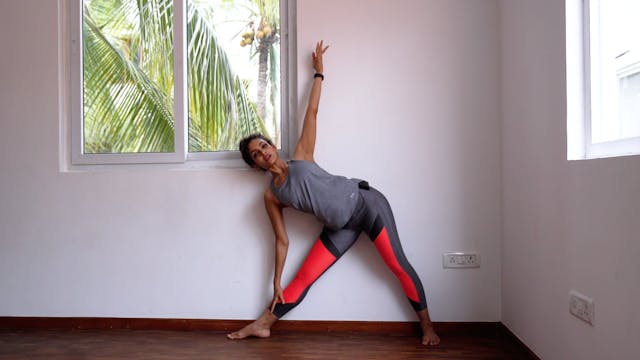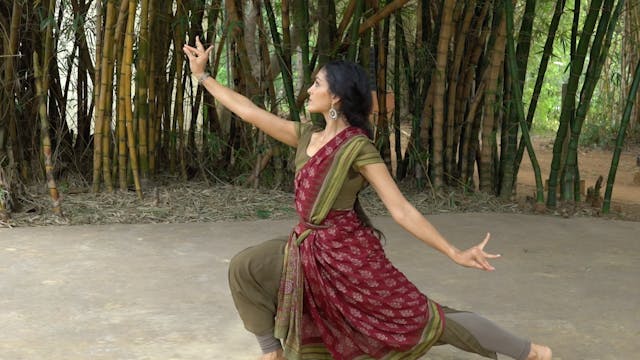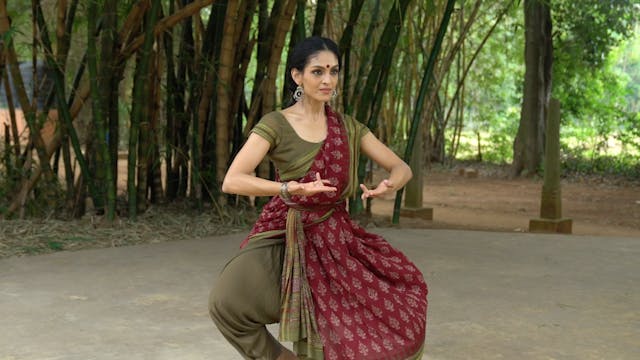Pakkadavu 3
Playlist 16 : Repertoire Pushpanjali
•
3m 33s
Pointers for Pakkadavu 3:
Keep your shoulders down when lifting your arms.
Make sure your arms do not go too far back.
Follow your arm and keep your gaze toward the wrist of the arm you are bending away from.
Make sure you keep your thighs pushing back while retaining Swastikam in your feet.
The Pakkadavu name is derived from the movement of the entire body as opposed to a name derived from specifically the articulation of the feet. The Raadha Kalpa method practises four different types of Pakkadavu to create specificity in feet articulation. The movement of the arms are interchangeable and can be varied to an even greater number when placed in choreography.
The four types that are introduced, address with clarity four types of feet articulation in combination with most commonly used arm movements.
This progression is unique to the Raadha Kalpa method as it changes the starting and ending of each Pakkadavu by changing the use of Tattu in Araimandi or Swastikam.
Pay specific attention to the feet articulation in the Pakkadavu series. Start with the first one and then progress to the rest.
Up Next in Playlist 16 : Repertoire Pushpanjali
-
Bends 3 : elongated side
The Raadha Kalpa Method has analysed and broken down the various torso movements into a system of bends that are different from one another. The musculature that is engaged in each bend is different and the stability necessary for execution is also different.
This introduces the second side bend.
-
Naatadavu 4
The 4th Naatadavu expects a little more stability in the body. Please practice any of the Strength sections that work on lunges and squats, to achieve a deep lunge in this Adavu.
-
Kudiita Thattaduvu
Pointers for Kuditta Thattadavu:
Try to go down instead of hopping up each time you snatch onto your heels.
Keep dropping your tailbone and pushing your thighs back.
When you bend to the side, elongate your lower side, so the length of your top side and bottom side remain the same.
Do not push...


